
Host: Beth Bennett
Producer: Beth Bennett
Engineer: Maeve Conran
Additional Contributions: Shelley Schlender
Executive Producer: Susan Moran
Listen to the show:
Podcast: Play in new window | Download (Duration: 26:47 — 24.5MB)
Subscribe: RSS
The KGNU Science Show

Host: Beth Bennett
Producer: Beth Bennett
Engineer: Maeve Conran
Additional Contributions: Shelley Schlender
Executive Producer: Susan Moran
Listen to the show:
Podcast: Play in new window | Download (Duration: 26:47 — 24.5MB)
Subscribe: RSS
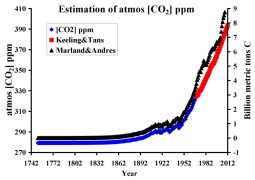 The Keeling Curve (starts 5:00) Friday, August 12th the Boulder Shambala Center hosts: Living Beyond Hope And Fear: Social Confidence And Climate Change. One leader of the event is the daughter of scientist who created the Keeling Curve for tracking CO2. Emily Takahashi talks about how the memory of her father’s work inspired her to do the symposium.
The Keeling Curve (starts 5:00) Friday, August 12th the Boulder Shambala Center hosts: Living Beyond Hope And Fear: Social Confidence And Climate Change. One leader of the event is the daughter of scientist who created the Keeling Curve for tracking CO2. Emily Takahashi talks about how the memory of her father’s work inspired her to do the symposium.
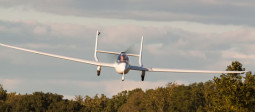 Electric Airplanes (starts 8:12) The constant drone of airplanes has many nature lovers wishing planes could be quieter. It’s starting to happen, thanks to tinkerers and scientists who are building reliable electric powered airplanes, such as Randall Fishman of ElectraFlyer.
Electric Airplanes (starts 8:12) The constant drone of airplanes has many nature lovers wishing planes could be quieter. It’s starting to happen, thanks to tinkerers and scientists who are building reliable electric powered airplanes, such as Randall Fishman of ElectraFlyer.
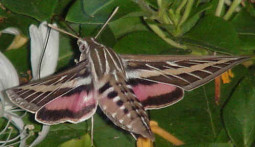
Moth Parties (starts 15:03) It’s that time of year when butterflies, dragonflies and other colorful insects fill the air. A more humble flying creature is the lowly moth. Boulder Audubon Society‘s, Pam Piombino .says moths are gaining enough of a following, some people now hold Moth Parties about . . . moths. (Moth music is “Moths Around the Candle Flame.”)
Hosts: Joel Parker, Shelley Schlender
Producer: Shelley Schlender
Engineer: Shelley Schlender
Headlines: Alejandro Soto, Joel Parker, Shelley Schlender, Kendra Krueger
Executive Producer: Susan Moran
Podcast: Play in new window | Download (Duration: 27:28 — 25.2MB)
Subscribe: RSS
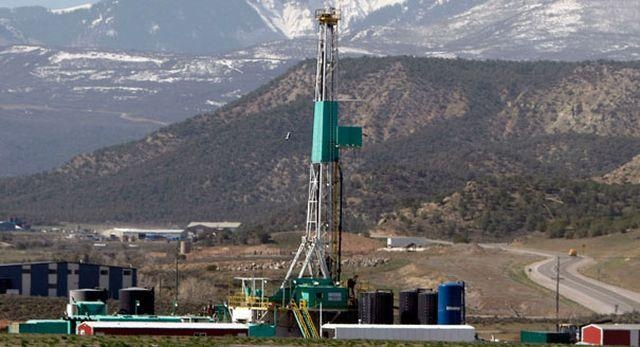
In Colorado, a boom in methane development over the past few years has raised questions about whether the environmental impacts are outpacing scientists’ ability to measure them. Shelley Schlender and Daniel Glick discuss the current state of the science looking into fracking’s impacts. Here is a compendium of scientific, medical, and media findings demonstrating risks and harms of fracking.
Hosts: Daniel Glick, Shelley Schlender
Producer: Joel Parker
Engineer: Shelley Schlender
Headlines: Beth Bennett, Natalia Bayona, Joel Parker
Executive Producer: Susan Moran
Listen to the show:
Podcast: Play in new window | Download (Duration: 27:18 — 25.1MB)
Subscribe: RSS

Host: Beth Bennett
Producer: Beth Bennett
Engineer: Maeve Conran
Executive Producer: Susan Moran
Listen to the show:
Podcast: Play in new window | Download (Duration: 27:40 — 25.3MB)
Subscribe: RSS
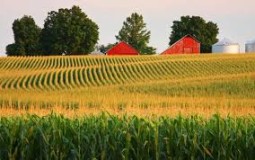
Sustainable Agriculture (starts 3:06): We couldn’t feed the planet without nitrogen, a vital nutrient for crops. But most soils don’t produce enough of it to feed anywhere near our 7 billion-plus humans on the planet. So, for nearly a century we’ve been applying synthetic fertilizer—mainly nitrogen and phosphorus — to grow crops for animals and people. But we have overindulged, creating vast amounts of waste, in the form of nitrogen pollution of waterways and the atmosphere. State and federal regulations have pressured growers to dramatically reduce fertilizer runoff from their fields. But it’s not been enough. Another approach – call it the carrot versus the stick – is also taking hold. Major food retailers, wholesalers, and producers, such as Walmart, United Suppliers and Unilever are transforming their whole supply chains, making food production less carbon- and nitrogen-intensive. Suzy Friedman, a sustainable agriculture expert with the Environmental Defense Fund, discusses with host Susan Moran how programs such as SUSTAIN help large food companies shrink their environmental footprint.
Hosts: Natalia Bayona, Susan Moran
Producer: Susan Moran
Engineer: Tim Russo
Executive Producer: Susan Moran
Listen to the show:
Podcast: Play in new window | Download (Duration: 26:26 — 24.2MB)
Subscribe: RSS

Quantum Dot Antibiotics (starts 1:00) This programmable antibiotic might keep pace with quickly evolving superbugs. Unlike most drugs – it’s not derived from biological sources. It’s a tiny version of the semiconductors in everything from TVs to iphones to solar panels. This “antibiotic” is made of nanoparticles, known as quantum dots. CU Biofrontiers scientists Prashant Nagpal and Anushree Chatterjee explain their new invention.

Shrinking Ozone Hole – (starts 15:24) The ozone hole is finally growing smaller – we’ll find out why and how long it will take to completely “heal” the ozone hole from Birgit Hassler, a researcher with the Cooperative Institute for Research in Environmental Sciences (CIRES), a partnership between the University of Colorado Boulder and the National Oceanic and Atmospheric Administration (NOAA).
Hosts: Shelley Schlender, Susan Moran
Producer:Shelley Schlender
Engineer:Shelley Schlender
Executive Producer: Susan Moran
Listen to the show:
Podcast: Play in new window | Download (Duration: 26:17 — 30.1MB)
Subscribe: RSS
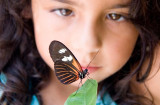
Pollinators Matter (starts at 4:43): Now that backyard gardens are in full bloom it’s a good time to think about pollinators. Honeybees, butterflies, beetles and other pollinators depend on many flowering plants for nectar. And we depend on these pollinators for many foods we love in our diet, from almonds to apples to blueberries. Some of these pollinators, especially honeybees and monarch butterflies, are facing severe threats, here in Colorado as well as globally. Among the culprits are habitat destruction and insecticides called neonicotinoids. The Butterfly Pavilion in Westminster is not only a popular destination for kids and adults who want to walk among butterflies, and tough tarantulas. It is also conducting research on pollinators and their habitat. Mary Ann Colley, vice president of science and conservation at the Pavilion, discusses with host Susan Moran some pollinator-focused research and educational campaigns. Info on Butterfly Pavilion’s citizen science efforts–Colorado Butterfly Monitoring Network and Urban Prairies Project–are on the Pavilion’s website. Related citizen science projects: The Bees’ Needs and Xerces Society. For more info on pollinators go to the National Wildlife Federation and USDA Agriculture Research Service.
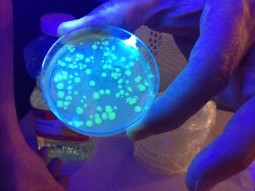
The New Biology (starts at 16:48): Denver Biolabs is the first community do-it-yourself bio-lab in Colorado. It focuses on making synthetic biology–where biology meets engineering–accessible to everyone. Biolabs is a community resource, giving students, researchers, entrepreneurs and others access to a community lab space. It also offers training in building bio-tools, learning lab fundamentals and experimenting with molecular gastronomy. Biolabs also develops technologies related to bioinformatics, biomimicry, bio-hacking and bio-printing. Dr. Heather Underwood is the co-founder and executive director of Denver Biolabs, which she discusses with host Leslie Dodson. For info on similar labs that have inspired Denver Biolabs, go to: Berkeley Biolabs, BioCurious, and Counter Culture Labs.
Hosts: Leslie Dodson, Susan Moran
Producer: Susan Moran
Engineer: Maeve Conran
Executive Producer: Shelley Schlender
Podcast: Play in new window | Download (Duration: 26:32 — 24.3MB)
Subscribe: RSS
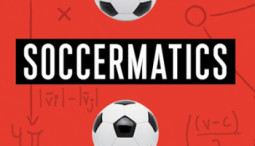 David Sumpter’s new book is Soccermatics–Mathematical Adventures in the Beautiful Game. It’s about how the mathematical patterns of how to win at soccer — and much much more — like how a math algorithm of how a slime mold seeks out food can help engineers design an efficient subway system. The math that helps a soccer team win can also help a business team succeed. . . . and in this special summer pledge drive show, it’s also a chance to hear about KGNU Community Radio and how you can make a difference by making it happen.
David Sumpter’s new book is Soccermatics–Mathematical Adventures in the Beautiful Game. It’s about how the mathematical patterns of how to win at soccer — and much much more — like how a math algorithm of how a slime mold seeks out food can help engineers design an efficient subway system. The math that helps a soccer team win can also help a business team succeed. . . . and in this special summer pledge drive show, it’s also a chance to hear about KGNU Community Radio and how you can make a difference by making it happen.
Hosts: Shelley Schlender & Maeve Conran
Producer: Shelley Schlender
Engineer: Shelley Schlender
Executive Producer: Shelley Schlender
Podcast: Play in new window | Download (Duration: 28:23 — 26.0MB)
Subscribe: RSS
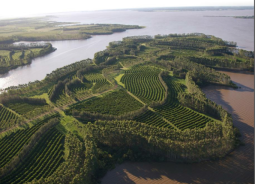
The Carbon Farming Solution – (Starts 2:13) Carbon Sequestration is the act of removing carbon from the air and putting it . . . somewhere else. Kendra Krueger talks with author Eric Tunesmeier about his book, The Carbon Farming Solution, with surprising information such as how driving to a remote organic farm stand can cause more carbon pollution than getting groceries at a close-to-home supermarket. However, done correctly, including thinking through how to get food to people who need it, Tunesmeier says carbon farming could sequester hundreds of billions of metric tons of carbon from the atmosphere . . . with plants.
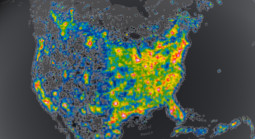
Light Pollution – (Starts 17:36) Over one third of all the people on earth live with such extensive light pollution, they can’t even see the Milky Way at night. That’s according to an updated world “light pollution” atlas. Shelley Schlender talks with NOAA scientist Chris Elveidge about NOAA’s “Earth at Night” maps and “The new world atlas of artificial night sky brightness and the artificial Sky.”
Hosts: Kendra Krueger & Shelley Schlender
Producer: Kendra Krueger
Engineer: Kendra Krueger
Executive Producer: Shelley Schlender
Listen to the show:
Podcast: Play in new window | Download (Duration: 27:24 — 25.1MB)
Subscribe: RSS
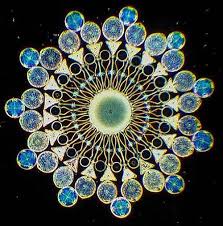
Host: Beth Bennett
Producer: Beth Bennett
Engineer: Maeve Conran
Executive Producer: Shelley Schlender
Listen to the show:
Podcast: Play in new window | Download (Duration: 28:01 — 25.6MB)
Subscribe: RSS